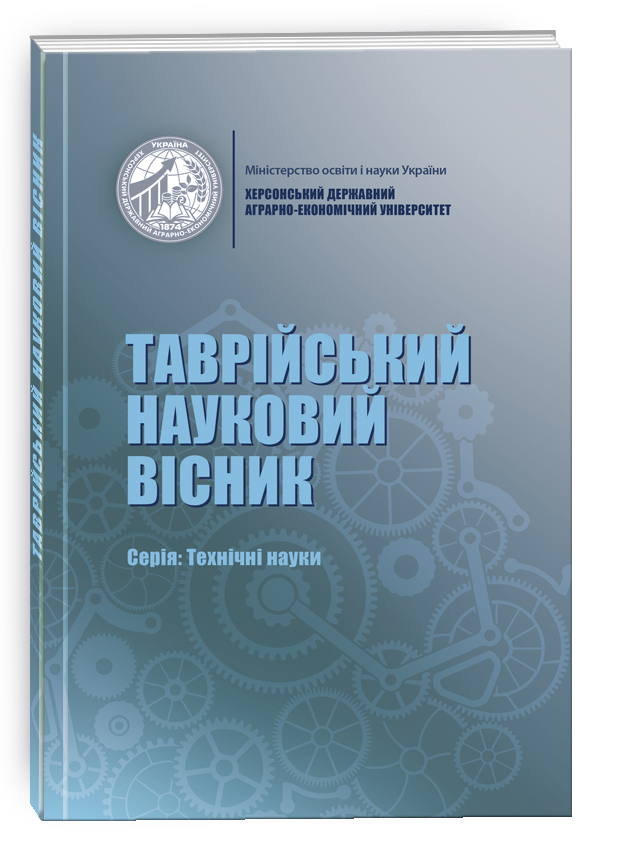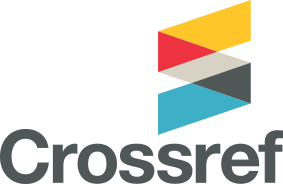IMPLEMENTATION OF NEURAL NETWORK ALGORITHMS IN FORECASTING THE PRICE DYNAMICS OF FINANCIAL ASSETS
DOI:
https://doi.org/10.32782/tnv-tech.2024.5.4Keywords:
machine analysis, neural network architecture, financial assets, capital asset pricing, supervised learning, probabilistic forecasting, hyperparameter optimizationAbstract
The analysis of the implementation of neural network algorithms in forecasting the price dynamics of financial assets has been conducted. It was noted that the implementation of automated methods for predicting financial asset prices includes the formulation of technical tasks, the search for criteria that indicate the solution to the task, the evaluation of statistical indicators pointing to the volume of financial data, as well as the selection and optimization of relevant machine analysis tools. To determine the effectiveness of the financial data machine analysis system, it was compared with linear models based on the capital asset pricing model (CAPM), which is founded on a single-period investment scheme, the risk-averse nature of most investors, and the assumption of zero transaction costs and no information asymmetry. The advantages of the probabilistic forecasting software package «NGBoost» were highlighted, including the determination of probability distributions for outcomes, which allows for a full distribution of possible values, the flexibility for users to choose the type of probabilistic distribution for model building, and the optimization of probabilistic models using natural gradient descent, ensuring a more stable training process when working with complex distributions. To evaluate the performance of neural network algorithms in automating financial analytics and forecasting, models such as «NGBoost», «XGBoost», «CatBoost», «LightGBM», shallow feed-forward neural networks, and deep feed-forward neural networks were included in the analysis, with hyperparameter optimization conducted for each neural network architecture. It was noted that the selection of these models is indicative for application in financial analytics. The combination of gradient boosting and neural networks provides a wide range of methods for solving tasks related to asset price forecasting, risk assessment, and accurate prediction of future financial indicators. At the same time, the use of hyperparameter optimization allows neural network models to be tuned to achieve maximum accuracy, which is critically important for ensuring competitive advantages in financial markets. The specific features of implementing this evaluation system have been examined to optimize neural network algorithms for modern neural network architectures, such as GRU, GAT, and Informer models.
References
Henrique B. M., Sobreiro V. A., Kimura H. Practical machine learning: Forecasting daily financial markets directions. Expert Systems with Applications. 2023. Vol. 233. DOI: https://doi.org/10.1016/j.eswa.2023.120840.
Ashtiani M. N., Raahemi B. News-based intelligent prediction of financial markets using text mining and machine learning: A systematic literature review. Expert Systems with Applications. 2023. Vol. 217. DOI: https://doi.org/10.1016/j.eswa.2023.119509.
Monk A., Prins M., Rook D. Rethinking alternative data in institutional investment. The Journal of Financial Data Science. 2019. Vol. 1. No. 1. P. 14–31. DOI: https://doi.org/10.3905/jfds.2019.1.1.014.
Barker A., Monk A., Rook D. Technological disruption and long-term investors: Managing risk and opportunities. SSRN Electronic Journal. 2024. DOI: https://doi.org/10.2139/ssrn.4741908.
Risk and risk management in the credit card industry / Butaru F., Chen Q., Clark B., et al. Journal of Banking & Finance. 2016. Vol. 72. DOI: https://doi.org/10.1016/j.jbankfin.2016.07.015.
Gottfried M. How credit-card data might be distorting retail stocks. The Wall Street Journal. 2017. URL: https://www.wsj.com/articles/how-credit-card-data-mightbe-distorting-retail-stocks–1483468912 (last accessed: 29.10.2024).
A deep neural network for oil spill semantic segmentation in SAR images / Orfanidis J., Ioannidis K., Avgerinakis K., et al. ICIP 2018. 2018. P. 3773–3777. DOI: https://doi.org/10.1109/ICIP.2018.8451113.
Beyond spatial auto-regressive models: Predicting housing prices with satellite imagery / Bency A., Rallapalli S., Ganti R., et al. WACV 2017. 2019. P. 320–329. DOI: https://doi.org/10.1109/WACV.2017.42.
Buchanan. Artificial intelligence in finance. The Alan Turing Institute. Apr. 2019. DOI: https://doi.org/10.5281/zenodo.2612537.
McKinsey on Payments: Special Edition on Advanced Analytics in Banking / Buehler D’Silva, Fitzpatrick, et al. Tech. rep. Aug. 2018. DOI: https://doi.org/10.48550/arXiv.2004.01504.
Heaton J. B., Polson N. Deep learning for finance: Deep portfolios. SSRN Electronic Journal. 2016. DOI: https://doi.org/10.2139/ssrn.2838013.
Warin X. Deep learning for efficient frontier calculation in finance. Journal of Computational Finance. 2022. DOI: https://doi.org/10.21314/jcf.2021.017.
Chen J. M. The intertemporal capital asset pricing model. Econophysics and Capital Asset Pricing. 2017. P. 127–138. DOI: https://doi.org/10.1007/978–3-319–63465–4_7.
Kyriakou I., Mousavi P., Nielsen J. P., et al. Machine learning for forecasting excess stock returns – The five-year-view. Graz Economics Papers 2019–06. 2019. URL: https://ideas.repec.org/p/grz/wpaper/2019–06.html (last accessed: 29.10.2024).
Equity2vec / Wu Q., Brinton C. G., Zhang Z., Pizzoferrato A., Liu Z., Cucuringu M. Proceedings of the Second ACM International Conference on AI in Finance. 2021. Vol. 79. P. 1–9. DOI: https://doi.org/10.1145/3490354.3494409.
A deep learning framework for pricing financial instruments / Wu Q., Zhang Z., Pizzoferrato A., et al. arXiv. org. Sept. 2019. Article ID 1909.04497.
Gu S., Kelly B. T., Xiu D. Empirical asset pricing via machine learning. SSRN Electronic Journal. Jan. 2018. DOI: https://doi.org/10.2139/ssrn.3281018.
An extensive evaluation of seven machine learning methods for rainfall prediction in weather derivatives / Cramer S., Kampouridis M., Freitas A. A., Alexandridis A., et al. Expert Systems with Applications. 2017. Vol. 85. DOI: https://doi.org/10.1016/j.eswa.2017.05.029.
Machine learning the cryptocurrency market / Alessandretti L., Bahrawy A., Aiello L. M., Baronchelli A. SSRN Electronic Journal. May 2018. DOI: https://doi.org/10.2139/ssrn.3183792.
Lahmiri S., Bekiros S. Cryptocurrency forecasting with deep learning chaotic neural networks. Chaos, Solitons and Fractals. 2019. Vol. 118. P. 35–40. DOI: https://doi.org/10.1016/j.chaos.2018.11.014.
Ndikum P. Machine learning algorithms for financial asset price forecasting. ArXiv 2004.01504v1. 2020. P. 1–16. DOI: https://doi.org/10.48550/arXiv.2004.01504.
Kelly B. T., Pruitt S., Su Y. Some characteristics are risk exposures, and the rest are irrelevant. SSRN Electronic Journal. Jan. 2017. DOI: https://doi.org/10.2139/ssrn.3032013.
Ghahramani Z. Probabilistic machine learning and artificial intelligence. Nature. 2015. Vol. 521. No. 7553. P. 452–459. DOI: https://doi.org/10.1038/nature14541.
Zöller M. – A., Huber M. F. Benchmark and survey of automated machine learning frameworks. Journal of Artificial Intelligence Research. 2021. Vol. 70. P. 409–472. DOI: https://doi.org/10.1613/jair.1.11854.
Bergstra J., Yamins D., Cox D. Hyperopt: A python library for optimizing the hyperparameters of machine learning algorithms. Proceedings of the Python in Science Conference. 2013. P. 13–19. DOI: https://doi.org/10.25080/majora–8b375195–003.
Ershov V. High performance insights from GPU version CatBoost. Computer Tools in Education. 2022. No. 2. P. 59–73. DOI: https://doi.org/10.32603/2071–2340–2022–2-59–73.
Sukarsa I. M., Pandika Pinata N. N., Dwi Rusjayanthi N. K., Wisswani N. W. Estimation of gourami supplies using gradient boosting decision tree method of XGBoost. TEM Journal. 2021. P. 144–151. DOI: https://doi.org/10.18421/tem101–17.
Kwak N. W., Lim D. H. Financial time series forecasting using AdaBoost-GRU ensemble model. Journal of the Korean Data and Information Science Society. 2021. Vol. 32. No. 2. P. 267–281. DOI: https://doi.org/10.7465/jkdi.2021.32.2.267.
Liu B., Lai M. Advanced machine learning for financial markets: A PCA-GRU-LSTM approach. Journal of the Knowledge Economy. 2024. DOI: https://doi.org/10.1007/s13132–024–02108–3.
Cheng H., Wang K., Tan X. A link prediction method for Chinese financial event knowledge graph based on graph attention networks and convolutional neural networks. Engineering Applications of Artificial Intelligence. 2024. Vol. 138. DOI: https://doi.org/10.1016/j.engappai.2024.109361.
Graph attention site prediction (GRASP): Identifying druggable binding sites using graph neural networks with attention / Smith Z., Strobel M., Vani B. P., Tiwary P. bioRxiv: website. 2023. DOI: https://doi.org/10.1101/2023.07.25.550565.
Wu Y. Comparison between Transformer, Informer, Autoformer and nonstationary Transformer in financial market. Applied and Computational Engineering. 2023. Vol. 29. No. 1. P. 68–78. DOI: https://doi.org/10.54254/2755–2721/29/20230874.
Ojeda C., Artal C., Tejera F. Informer, an information organization Transformer architecture. Proceedings of the 13th International Conference on Agents and Artificial Intelligence. 2021. P. 381–389. DOI: https://doi.org/10.5220/0010372703810389.







